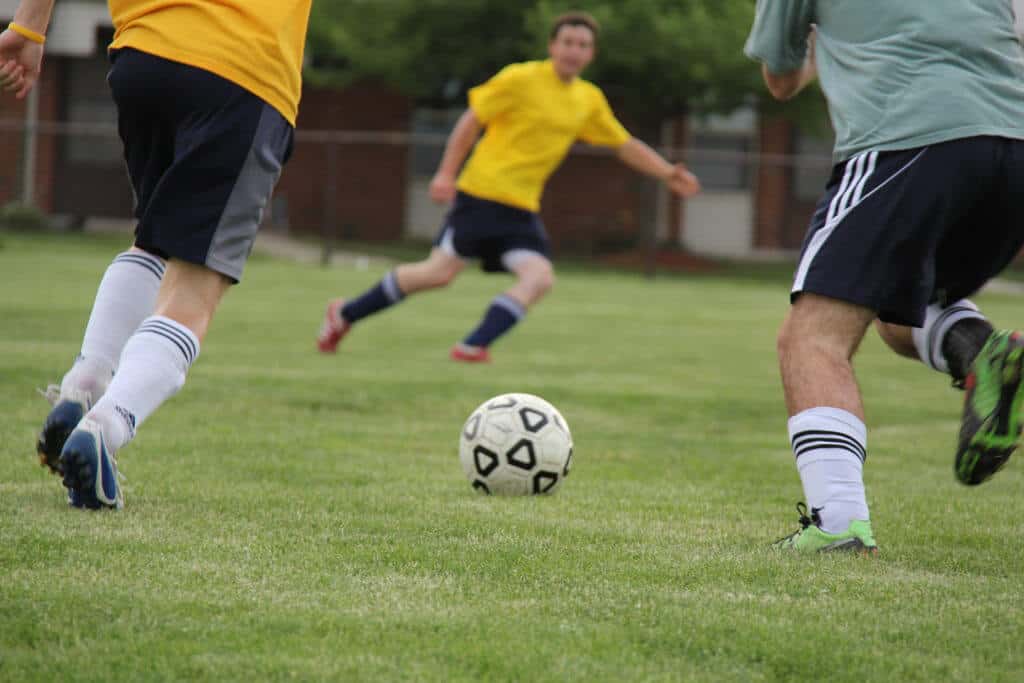
In the coming weeks, many male and female football players will play in tournaments, trials, and training sessions with the intention of joining a new club. At the elite end, young people will view these opportunities as a chance to develop and showcase their skills scouts, performance analysts, and coaches in the hope of further establishing a professional career.
Talent Identification (TI) in youth soccer
Identifying talented youth performers is a widespread activity in football. This is because a talented young player’s registration can be a valuable asset for a club. As a result, scouting children begins as young as nine and continues year on year with a view to identifying ‘potential’ and securing their registration (Ford, Le Gall, Carling and Williams 2008). Cushion & Jones (2006, p.145), for example, report that:
“Places within an academy are usually awarded on the basis of a successful invitational trial, arranged by club “scouts” who scour the region for talented young players, and competition is fierce…Subsequently, if a new player is found (by the academy coaches) to be a better prospect, he can replace an existing player, who is then released.”
TI also determines access to exclusive sporting experiences for large numbers of young children. Indeed, this September many PE teachers will have children in their classes who are either delighted or disappointed with the TI process. In fact some may have already had positive or negative judgements because TI is an emotional process that takes place all year round and can continue for years. It is therefore also important that TI is effective, efficient and ethical for the benefit of both clubs and children. Consequently many clubs have turned to sport science to guide their practice.
What does the science say is talent?
TI models (Vaeyens, Lenoir, Williams, & Renaat, 2008) have acknowledged that talent is multidimensional i.e. it includes a wide variety of variables such as the physical (e.g. strength, speed etc.) and psychological (e.g. resilience, confidence). Despite this, traditional scientific studies of tend to take a unidimensional approach to TI e.g. physical or psychological. These studies recommend or report on quantitative tests of young people at a given point as means of identifying the most talented performers. This approach suggests that talent is relatively fixed, and can be objectively measured immediately.
What do coaches think?
The seven coaches in a small scale study took a very different approach to talent identification. These coaches saw TI as a long term nurturing process, i.e. the best way to identify talent is to grow it by coaxing and challenging.
“I think you are born with abilities, but I also think there is greater scope for them to be nurtured and moulded into great [players] with the right guidance…Too often in youth sport we have looked at what the kids can deliver there and then rather than what they have the potential to deliver. Talent is an on-going process that needs to be monitored and developed.”
“What are they going to be like when they are 22? That’s what talent ID is all about. Not what you are seeing and hearing now. That’s why it is so difficult.”
The coaches also saw talented players as unique with individual personalities and circumstances.
“I think we need to realise that everyone’s situation is unique and to act accordingly.”
Thus while some scientific articles focus on objectively measuring single variables at a given point, these coaches saw talent identification as an interpersonal process, which involves nurturing characteristics over the long term.
Why do some scientists and some coaches see talent so differently?
Kurt Danzinger demonstrated that how we understand concepts such as talent identification is often driven by the ideological, practical and social context of your business. Bearing this in mind, it is important to recognise that sport scientists often work in universities that require regular publication of results. They also tend to work in disciplines that emphasise statistical tools and have clear boundaries e.g. the physiologists. Given this, it is not surprising that sport scientists use quantitative measurements over short term periods in single disciplines i.e. physiology or psychology nut not both.
On the other hand, the motivation, role and status of coaches lies in their ability to develop talent over sustained periods of time. Thus it is not surprising that coaches see talent identification as a longitudinal and interpersonal process. If talent did not need care over time, then there would be no need for the coaches themselves.
This is not to suggest that sport scientists or coaches are selfish in how they see talent identification. Rather we highlight an apparent theory-practice divide between sport scientists and coaches and suggest that the divide is a result of the different worlds in which they exist. Given this perhaps neither the sport scientist nor coach is correct. Instead it is suggest that perhaps sport scientists and coaches might benefit from considering if their own vantage point is the best place to sport talent.
References
- Cushion, C., & Jones, R. (2006). Power, discourse and symbolic violence in professional youth soccer:the case of Albion FC. Sociology of Sport Journal, 23(2), 142-161.
- Danzinger, K. (1990). Constructing the subject: Historical origins of psychological research. Cambridge: Cambridge University Press.
- Ford, P., Le Gall, F., Carling , C., & Williams, A. M. (2008). A cross-cultural comparison of the participation histories of english and french elite youth soccer players. In T. Reilly, F. Korkusuz, & E. Ergen, Science and Football VI (pp. 109-112). London: Taylor and Francis.
- Miller, P. K., Cronin, C., & Baker, G. (2015). Nurture, nature and some very dubious social skills: an interpretative phenomenological analysis of talent identification practices in elite English youth soccer. Qualitative Research in Sport, Exercise and Health. doi:10.1080/2159676X.2015.1012544
- Vaeyens, R., Lenoir, M., Williams, A. M., & Renaat, M. P. (2008). Talent Identification and Development Programmes in Sport: Current Models and Future Directions. Sports Medicine, 38(9), 703-714.


[…] Spotting Young Talent in Elite English Football: Consider Your Vantage Point! […]